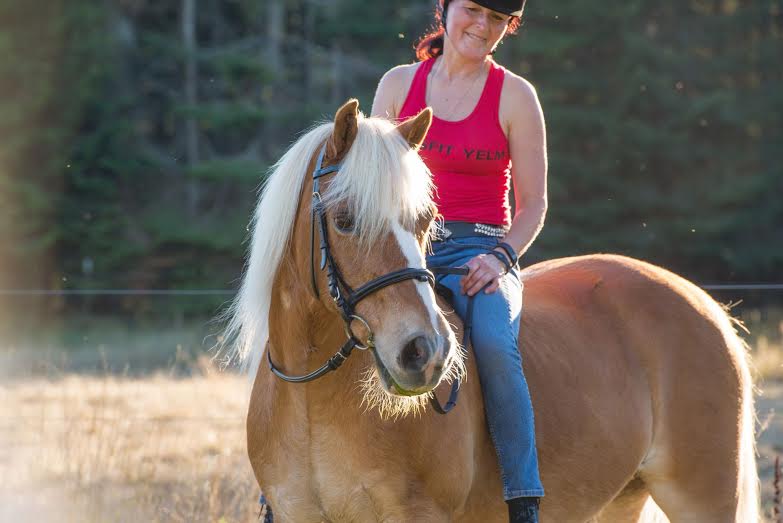The Haflinger is an easily recognized breed of small horses. Their icon is their golden coat and white mane and tail. Because of their color, the Haflingers are called “sunny horses”. Because of their endurance, mind, placidity, and mobility, the Haflingers have earned the reputation of a versatile horse.
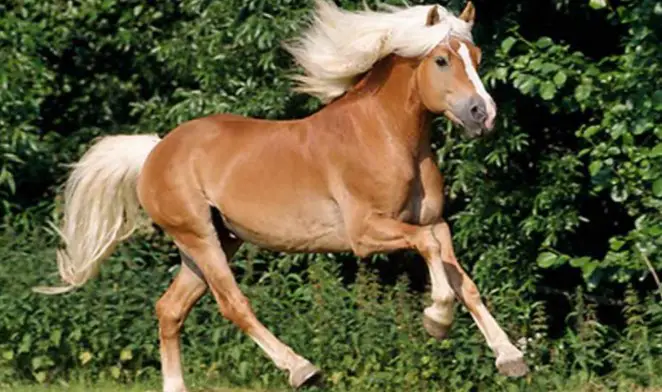
History of the Breed
The Haflingers were bred in Tyrol, Austria. Some researchers believe that the history of the breed dates back to the Middle Ages. There are mentions of small light horses that carried loads on narrow mountain trails.
However, the official history of the Haflinger begins in 1876. The Austrian army needed horses at that time to transport goods in the mountains. The local Tyrolean mares were crossbred with the stallions of the Hungarian breeds, the Gidran and Shagya, and then with the purebred Arabian stallions. In 1874 the Eastern stallion El-Bedavi XXII, and then his sons, was used in the breeding of the Haflinger. The breed of Haflinger was officially recognized in 1898.
The number of Haflinger horses grew rapidly after World War I and before World War II. But during World War II, because the army needed pack horses, they preferred massive shortened animals.
After the Second World War, the breed began to be bred even more actively restoring the small stature and grace of the breed. It was at this time that the Haflingers established themselves as unpretentious versatile riding and harness horses, small and at the same time strong enough.
The Haflingers are very popular in more than 30 countries, especially in Switzerland, Austria, the Netherlands, France, Serbia, Turkey, the USA, Albania, the UK, Slovakia, the Czech Republic, Poland, and Brazil.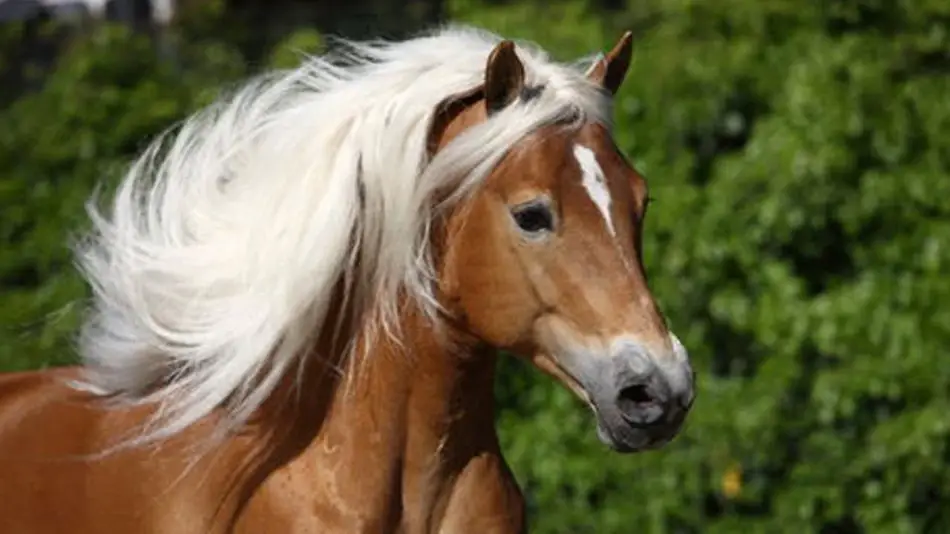
Description of the Haflingers
The Haflingers are small, have a beautiful head, short neck, and well-developed muscles.
The height at withers of the Haflinger:
- Stallions: 137 – 150 cm
- Mares: 132 – 142 cm
Because of the short stature, the Haflinger is sometimes mistakenly called a pony, although it is not a pony but a low-sized horse.
The Haflinger’s head is noble, harmonious, with a well-defined occiput. The ears are small and neat. The neck is short a little and properly set. The chest is quite deep and wide. The withers are relatively low. The back is strong, the loin is short. The croup is wide and muscular. The limbs are dry, not too long. The mane and tail are thick.
The distinctive feature of the Haflingers is the liver-chestnut coat (from light golden to chestnut), the mane and tail are white.
The movements of the Haflinger breed are rhythmic, energetic and at the same time relaxed. The Haflingers are characterized by a low stride.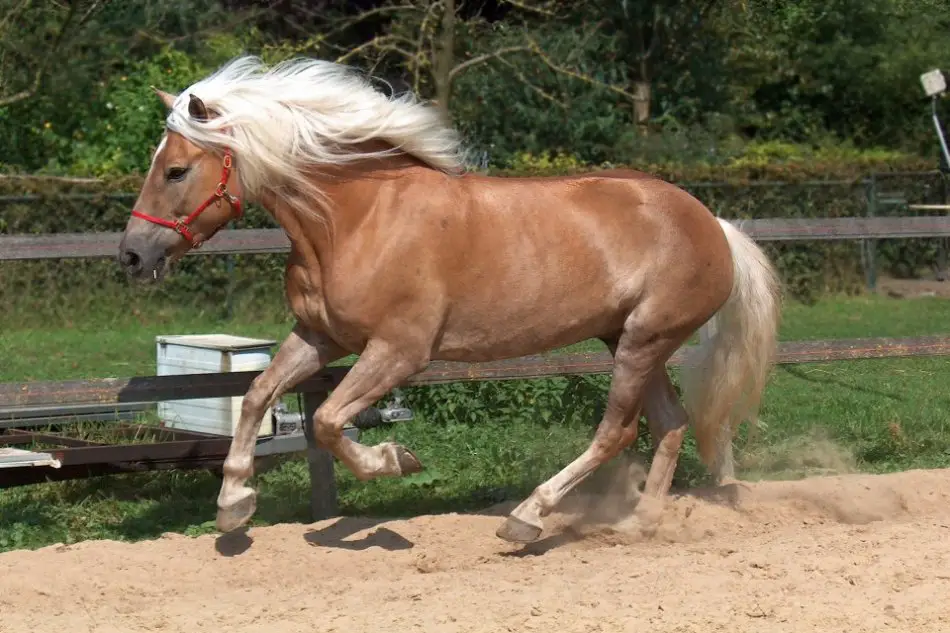
The Haflingers are famous for their good morals so that they can be led even by a child or a completely inexperienced person. They are obedient, docile, and not malicious horses. The Haflingers are easy to train and have just the patience of a saint, are unpretentious to the living conditions, and balanced.
The Haflingers are also called “Alpine tractors” because of their endurance and unpretentiousness, and farmers consider them the best breed.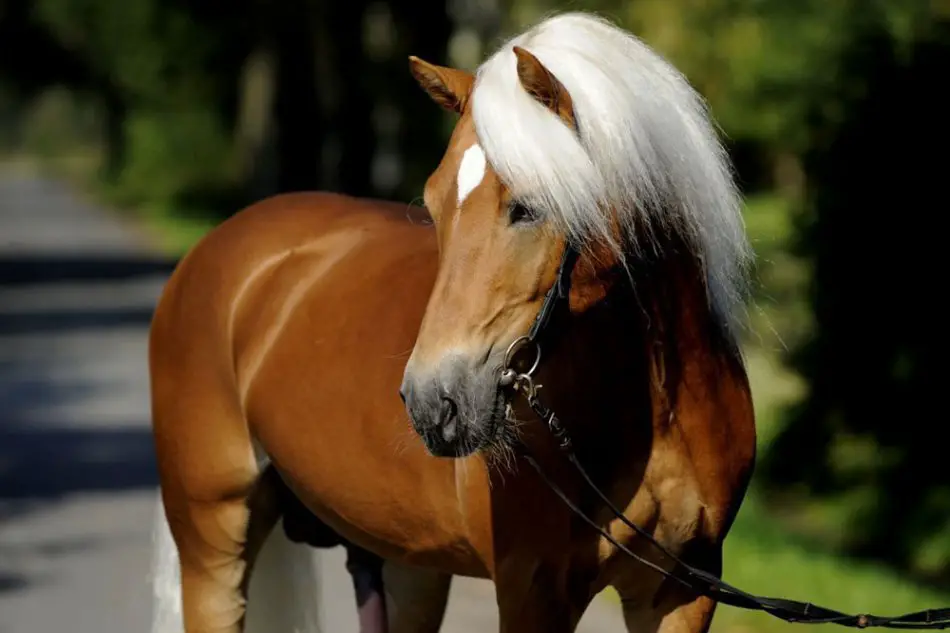
The Use of Horses
The Haflinger is a versatile horse that is used for transporting goods, harnessing, and riding.
These small horses are able to carry heavy loads in the mountains and take tourists around the Alps.
They take part in sports competitions (show jumping, dressage, endurance riding, combined driving, vaulting, western), are used as a walking horse, and in hippotherapy.
In addition, hundreds of the Haflingers are still in service in the army.
And due to their unpretentiousness and easy-going character, the Haflingers are considered to be perfect family horses.